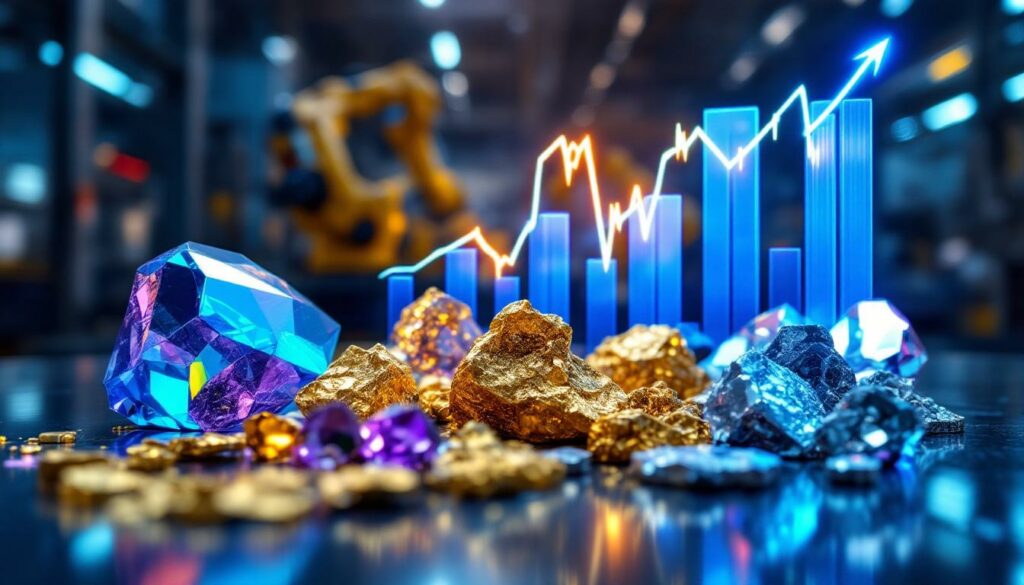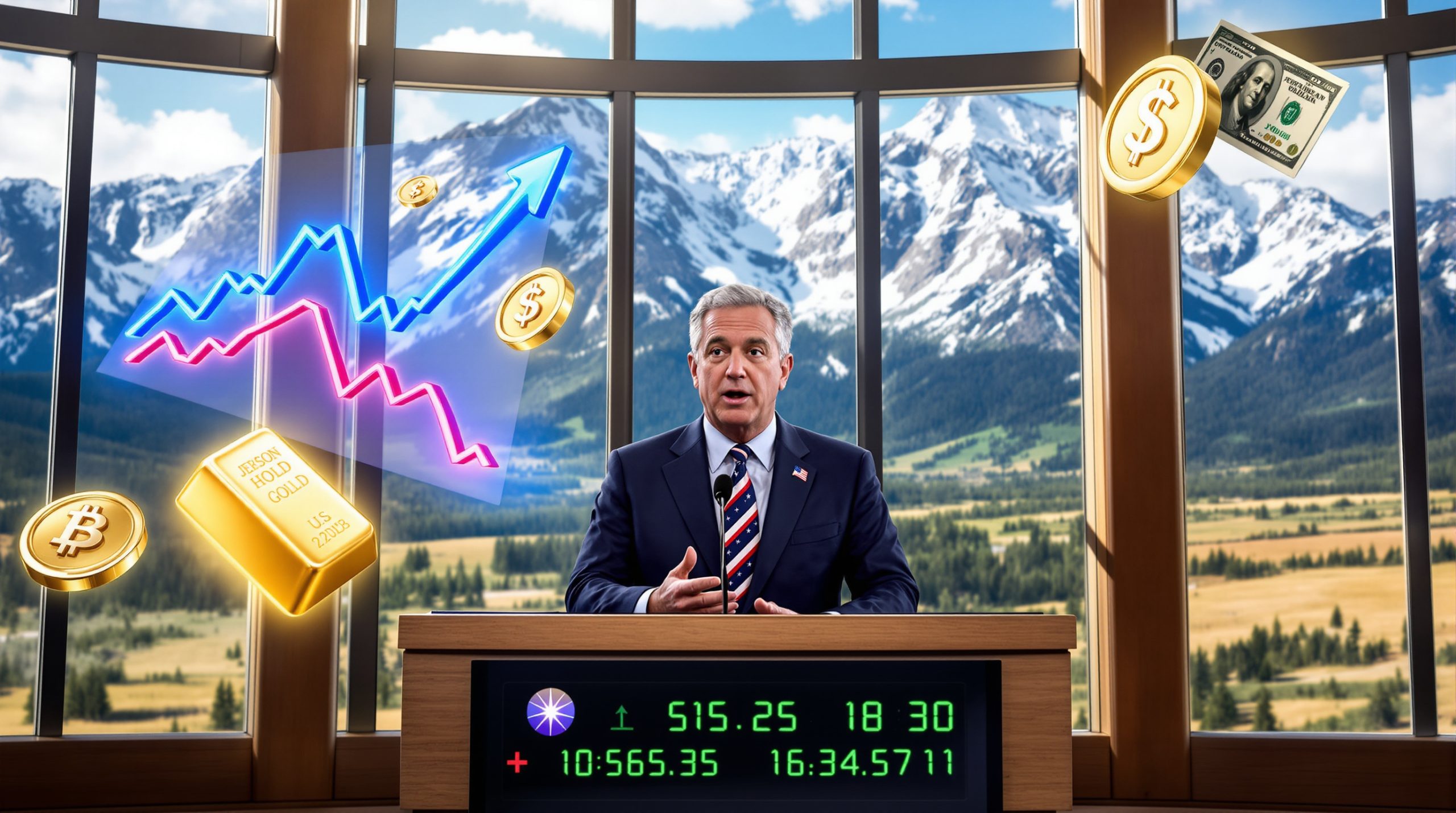Rare Earth Market in 2025: Price Stability and Renewed Optimism
The rare earth market in mid-2025 presents a picture of cautious optimism, with prices stabilizing after a period of volatility and key indicators suggesting potential upward momentum. Market participants are closely watching inventory levels, downstream demand patterns, and regulatory developments as they position themselves for the coming quarters.
What's Happening with Rare Earth Prices in 2025?
The rare earth market is experiencing notable price stability in June 2025, with several elements showing modest gains. According to the latest Shanghai Metal Market (SMM) data from June 24, 2025, prices across most rare earth elements have either stabilized or shown slight increases.
In the oxide market:
- Praseodymium-Neodymium (Pr-Nd) oxide has climbed to 444,000-446,000 yuan/mt, representing a 1.2% increase from early June
- Dysprosium oxide prices have strengthened to 1.63-1.64 million yuan/mt, up 0.8% from previous weeks
- Terbium oxide, one of the most valuable rare earths, has increased to 7.15-7.2 million yuan/mt, gaining 1.5% month-over-month
- Gadolinium oxide remains stable at 160,000-162,000 yuan/mt, showing resilience despite market fluctuations
- Holmium oxide prices hold steady at 514,000-518,000 yuan/mt, virtually unchanged since May
- Erbium oxide continues fluctuating between 300,000-305,000 yuan/mt, reflecting ongoing market uncertainty
The metal and alloy segment shows similar stability:
- Pr-Nd alloy prices stand firm at 543,000-547,000 yuan/mt
- Dysprosium-iron alloy trades consistently at 1.57-1.58 million yuan/mt
- Terbium metal commands premium prices of 8.8-8.85 million yuan/mt
- Gadolinium-iron alloy remains steady at 156,000-157,000 yuan/mt
- Holmium-iron alloy maintains its range of 515,000-525,000 yuan/mt
- Lanthanum-cerium alloy, among the less expensive rare earths, trades at 17,000-19,000 yuan/mt
"The current price stability reflects a market in transition," notes SMM's latest market commentary. "After months of downward pressure, we're seeing the first signs of price floor formation across most rare earth elements."
Price Trends and Significance
These price movements are particularly significant given the essential role rare earth elements play in high-technology manufacturing. For instance, neodymium and praseodymium are critical components in permanent magnets used in electric vehicle motors, while terbium and dysprosium enhance magnet performance at high temperatures.
The price stability comes after significant volatility in 2024, when oversupply concerns and demand uncertainty drove prices down by as much as 30% for some elements. The current stabilization suggests the market may have found equilibrium between supply and demand.
Why Is Market Sentiment Turning Bullish?
After a prolonged period of bearish sentiment, the rare earth market is showing signs of renewed optimism. Several key factors are contributing to this shift in market psychology:
Diminishing Low-Price Inventory
One of the most significant bullish indicators is the gradual depletion of low-priced inventory throughout the supply chain. According to SMM's market intelligence:
- Trader inventories of low-cost material acquired during 2024's price slump are now substantially reduced
- Processing facilities have largely worked through cheaper feedstock
- Strategic stockpiles maintained by both government and private entities have stabilized
This inventory reduction creates a foundation for price recovery, as new purchases must occur at current market rates rather than drawing from cheaper stockpiles.
Improving End-Use Demand
After a sluggish start to 2025, end-use demand for rare earth elements is showing meaningful recovery:
- Electric vehicle production, after declining in late 2024, has rebounded with Q2 2025 global production up 7.3% quarter-over-quarter
- Wind turbine installations have accelerated, particularly in Europe and China, driving demand for neodymium-based permanent magnets
- Consumer electronics manufacturers have increased orders after working through existing component inventories
"The demand recovery, while still in early stages, represents a significant shift from the caution we observed in the first quarter," notes the SMM analysis.
Accelerated Export License Approvals
The regulatory environment has become more favorable, with Chinese authorities accelerating export license approvals for rare earth products:
- Average approval times have decreased from 45 days to approximately 30 days
- Approval rates have improved to nearly 85%, up from 70% in late 2024
- More predictable export policies have reduced market uncertainty
This regulatory shift has improved international market access and boosted confidence among traders and suppliers, contributing to the increasingly bullish rare earth prices and market sentiment.
What Challenges Remain in the Rare Earth Market?
Despite the improving outlook, several significant challenges continue to temper enthusiasm in the rare earth market:
Persistent Downstream Demand Concerns
While demand shows signs of recovery, downstream consumption remains below expectations:
- Magnetic material enterprises have not substantially increased their order volumes
- Many manufacturers continue operating below capacity, with magnetic material production still 15-20% below 2024 peaks
- Order visibility remains limited, with most buyers securing material only for near-term production needs
This cautious purchasing behavior reflects ongoing uncertainty about end-market demand and suggests the recovery remains fragile.
Price Acceptance Issues
Market participants report significant resistance to higher prices from downstream buyers:
- Magnet manufacturers have been reluctant to accept price increases, citing their own margin pressures
- Contract negotiations have become more protracted as buyers resist upward price adjustments
- Some buyers continue seeking discounts below published market prices
This resistance creates friction in transaction volumes and limits the pace of price increases, even as market fundamentals improve.
Transaction Volume Weakness
Current market conditions are characterized by relatively weak transaction volumes:
- Daily trading volumes remain approximately 25% below 2024 averages
- Spot market activity is concentrated in smaller trades rather than bulk purchases
- Long-term contracts are being negotiated with more conservative volume commitments
"The current market shows a disconnect between price stability and transaction volumes," according to SMM's market commentary. "Prices have stabilized, but we have yet to see the robust trading activity that would confirm a full market recovery."
How Are Different Rare Earth Elements Performing?
The rare earth market's performance varies significantly by element category, with distinctive trends emerging across the spectrum.
Light Rare Earth Elements (LREEs)
Light rare earth elements, including lanthanum, cerium, praseodymium, and neodymium, show a mixed performance:
- Lanthanum and cerium prices remain mostly flat, with the lanthanum-cerium alloy trading steadily at 17,000-19,000 yuan/mt
- Praseodymium and neodymium (often tracked together as Pr-Nd) show modest strength, with oxide prices rising to 444,000-446,000 yuan/mt
The differentiated performance reflects the varied applications of these elements:
- Lanthanum and cerium, used primarily in catalysts and glass polishing, face relatively stable demand
- Praseodymium and neodymium, critical for permanent magnets, benefit from the recovering high-tech manufacturing sector
Medium and Heavy Rare Earth Elements (HREEs)
Heavy rare earth elements, particularly dysprosium and terbium, are showing more positive price movements:
- Terbium oxide has reached 7.15-7.2 million yuan/mt, among the most valuable materials in the rare earth family
- Dysprosium oxide has increased to 1.63-1.64 million yuan/mt
- Other heavy REEs like gadolinium, holmium, and erbium show stability but minimal growth
These elements, critical for enhancing high-performance magnets' temperature resistance, are experiencing stronger market fundamentals compared to light rare earths.
Strategic Importance and Price Premium
The price premium commanded by heavy rare earths reflects their strategic importance and limited supply:
- Terbium trades at approximately 40 times the price of lanthanum-cerium alloy
- Dysprosium commands roughly 10 times the price of common light rare earths
- These price differentials highlight the critical nature of heavy REEs in advanced technology applications
As the critical minerals energy transition accelerates, the strategic value of these elements continues to support their price premium in the market.
What's Driving Industry Optimism?
Beyond the immediate market indicators, several fundamental factors are supporting the growing optimism in the rare earth industry:
Supply-Side Adjustments
The gradual reduction in low-priced inventory suggests that suppliers have been implementing strategic adjustments:
- Production discipline among major producers has helped reduce market oversupply
- Inventory management strategies have become more sophisticated, with producers avoiding market-flooding behavior
- Secondary suppliers have moderated their market participation as prices stabilized
These adjustments are contributing to a more balanced market and laying the groundwork for sustainable price recovery.
Improved Market Confidence
Industry participants are expressing increased confidence in future price trajectories:
- Market surveys indicate that over 65% of participants expect stable to rising prices through the remainder of 2025
- Forward contract negotiations reflect expectations of modest price increases
- Investment in production capacity, which slowed during the price downturn, shows early signs of revival
This confidence represents a significant shift from the market pessimism that dominated in late 2024 and early 2025.
Strategic Value Recognition
The strategic importance of rare earth elements in advanced technologies and green energy transitions continues to gain recognition:
- National policy initiatives increasingly acknowledge rare earths as critical materials
- Supply chain resilience programs highlight the strategic value of rare earth elements
- Research and development efforts to enhance efficient use of rare earths have accelerated
"The market is increasingly recognizing that rare earths are not merely industrial commodities but strategic materials essential to technological advancement," notes the SMM market assessment.
The establishment of an European CRM facility has further underscored global efforts to secure reliable access to these vital resources.
What's the Short-Term Outlook for Rare Earth Prices?
Looking ahead to the remainder of 2025, market analysts anticipate continued stability with potential for gradual strengthening.
Price Stability Expected
Most market observers forecast that rare earth prices will maintain their current stability in the short term:
- Pr-Nd oxide is expected to trade in the 440,000-460,000 yuan/mt range
- Dysprosium oxide likely to remain between 1.60-1.70 million yuan/mt
- Terbium oxide anticipated to hold above 7.0 million yuan/mt
- Light rare earths expected to continue their pattern of minimal price fluctuation
This stability provides a foundation for market planning and reduces the risk premium associated with price volatility.
Watching Key Market Indicators
Industry observers are closely monitoring several indicators that could signal stronger price movements:
- Order volumes from magnetic material manufacturers, which typically lead broader market trends
- Export license approval rates and processing times, which impact international market dynamics
- Inventory levels across the supply chain, particularly at major producers and processors
- End-use demand from key sectors like electric vehicles and wind turbines
Changes in these indicators would likely precede any significant shift in price trajectories.
Balancing Forces in the Market
The market currently reflects a balance between bullish and bearish influences:
- Bullish factors: reduced low-priced inventory, improving demand, faster export approvals
- Bearish elements: sluggish downstream demand, price resistance, weak transaction volumes
This equilibrium suggests a period of consolidation before a clearer directional trend emerges. Most analysts anticipate that the balance will gradually shift toward bullish factors as downstream demand recovery strengthens.
Furthermore, the ongoing mining industry evolution will continue to influence how rare earth resources are developed and brought to market.
FAQ: Understanding the Rare Earth Market
How do rare earth prices impact the green energy transition?
Rare earth elements are essential components in permanent magnets used in electric vehicles and wind turbines. Price fluctuations directly impact manufacturing costs for these clean energy technologies:
- Neodymium and praseodymium comprise approximately 30-32% of the material in NdFeB magnets used in EV motors
- A typical EV contains 1-2 kg of rare earth elements, primarily in motor magnets
- Wind turbines using permanent magnet generators require approximately 200 kg of rare earth materials per megawatt of capacity
Price increases of 10% in key rare earths can translate to 1-3% higher costs for these green technologies, potentially affecting adoption rates if sustained, according to rare earth price data from Benchmark Minerals.
Disclaimer: Price impact estimates vary significantly based on design choices, manufacturing efficiency, and alternative technologies. Actual impacts should be evaluated on a case-by-case basis.
Which rare earth elements are most critical for high-tech applications?
While all 17 rare earth elements have specialized applications, several are particularly crucial:
- Neodymium and praseodymium: Essential for high-performance permanent magnets used in motors, generators, and speakers
- Dysprosium and terbium: Critical additions to magnets that maintain performance at high temperatures, particularly important for EV drive motors
- Europium, yttrium, and cerium: Key components in phosphors for LED lighting, displays, and other optical applications
- Lanthanum: Used in catalysts, battery electrodes, and specialized optical glass
These elements face the most significant supply pressure as technology applications expand, explaining their price premiums and market attention.
How does the export license process affect the global rare earth market?
Export licenses control the flow of rare earth materials from major producing countries, particularly China, which accounts for approximately 60% of global production and 85% of processing capacity:
- License quotas set volume limits on material exports, directly impacting global supply
- Approval processes can create delays and uncertainty in international supply chains
- License requirements vary by product type (oxides, metals, alloys, magnets)
The accelerated approval processes observed in mid-2025 increase market liquidity and can help stabilize global supply chains, while restrictions typically create price volatility and supply concerns.
What factors might trigger price increases in the coming months?
Several potential catalysts could drive rare earth prices higher:
- Demand acceleration: Faster-than-expected recovery in EV sales or wind energy installations
- Supply disruptions: Environmental inspections or production restrictions in mining regions
- Policy changes: New export quotas or strategic reserve purchases by major governments
- Inventory depletion: Complete drawdown of low-cost inventories throughout the supply chain
- Production costs: Rising energy or environmental compliance costs at mining and processing facilities
Conversely, continued weak demand or unexpected new supply sources could prevent price increases despite improving market sentiment.
In addition, developments in Greenland critical minerals and the Australia strategic reserve initiatives could further influence global supply dynamics and price trajectories.
Disclaimer: Market forecasts involve significant uncertainty. Investors and industry participants should conduct thorough due diligence before making decisions based on price expectations.
The rare earth market in 2025 stands at a pivotal point, balancing between the lingering effects of recent market weakness and emerging signs of recovery. As inventory levels normalize and demand gradually strengthens, the foundation appears to be forming for a more balanced market environment. While challenges remain, particularly in downstream demand and price acceptance, the overall trajectory suggests modest optimism for the remainder of the year.
For market participants, close monitoring of both price trends and the underlying market dynamics—particularly transaction volumes and order patterns—will be essential to navigate the evolving rare earth landscape.
Ready to Profit from the Next Major Mineral Discovery?
Stay ahead of the market with real-time alerts on significant ASX mineral discoveries, powered by Discovery Alert's proprietary Discovery IQ model. Explore historic returns from major discoveries and begin your 30-day free trial today at Discovery Alert's discoveries page.




